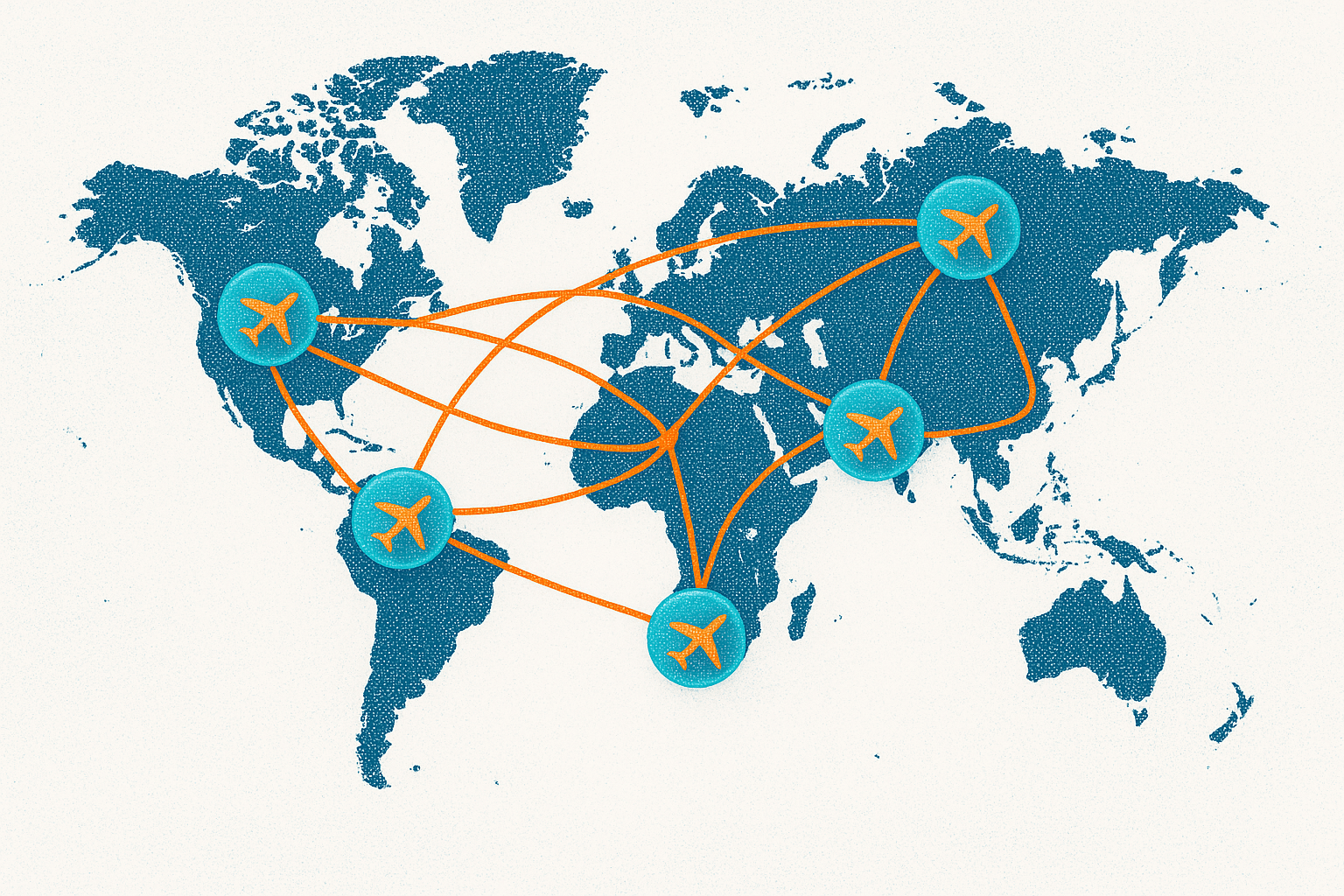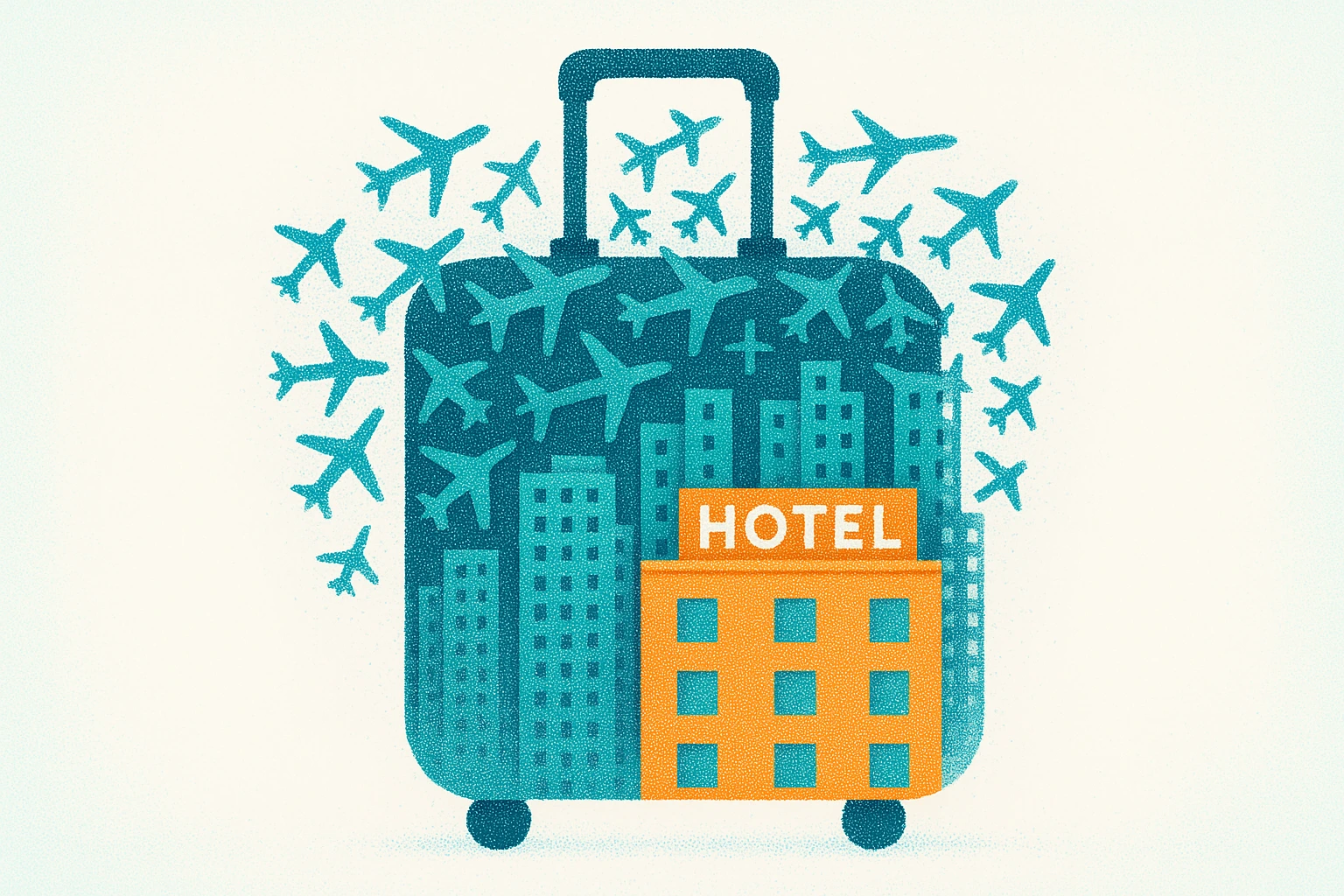Mileage Runs: How to Maximize Elite Status Step-by-Step
Strategic mileage runs help frequent travelers earn elite status efficiently. Learn the 5-step system to maximize qualifying miles and dollars.

Priority boarding, free upgrades, lounge access, and waived fees make frequent business travel more productive and comfortable. To earn airline elite status, business professionals who manage their own trips need smart planning and the right tools. This guide explains how mileage runs work, walks through the execution step by step, and shows how Otto the Agent can help you reach a higher status through your regular business travel without extra flights.
What is a Mileage Run?
A mileage run is a flight you book to accumulate frequent flyer miles, points, or elite status within an airline's loyalty program, not because you need to visit the destination. You can use these flights to maximize miles earned per dollar spent by choosing long-haul or multi-segment routes that unlock travel perks faster or maintain your elite tier for another year.
The time and expense of one mileage run usually pays off when it unlocks a year of perks you'll use on actual business trips: you get bumped to first class when flying to close deals, you work from airline lounges during layovers instead of fighting for outlets at the gate, and you breeze through priority check-in when racing to catch tight connections between client meetings.
How Do Mileage Runs Work?
Mileage runs work by targeting flights that earn the most status credits per dollar based on your airline's specific formula. Airlines calculate status using distance, ticket price, and fare class. Most major carriers now prioritize how much you spend on the ticket and whether you book premium economy, business, or first class over the physical miles you fly. This shift means a $400 transcontinental flight in premium economy can earn more status credits than a $200 cross-country trip in basic economy, even if both cover similar distances.
When you're choosing flights purely for the credits they generate, the actual destination becomes irrelevant. You're hunting for cheap, long-haul, or multi-segment tickets that maximize status credits regardless of where they take you.
Step-by-Step: Planning a Mileage Run
Planning a mileage run requires knowing the difference between your current credit balance and the credits needed for your target tier, then finding the flight that closes that difference for the lowest price. Follow these steps to make the math work in your favor.
Clarify Your Status Goals and Timelines
Log in to your frequent flyer account and pull three numbers: your current balance, the credits needed for your target tier, and the qualification deadline. If you're sitting at 37,000 American Loyalty Points and need 40,000 for Gold by March 31, you have a 3,000-point gap and a clock ticking. Without these exact numbers, you can't calculate whether a specific flight actually closes your gap or fits your timeline.
Research Best Options: Programs, Routes, Tools
Identify which airline program delivers perks you'll actually use on business trips. Compare routes and fare classes to find which flights earn the most qualifying credits for the lowest cost. Use ITA Matrix and Google Flights to surface cheap long-haul fares, then check community forums like FlyerTalk for real-time deals and promotional earning rates that multiply your credits on specific routes.
Calculate True Costs
Add up the full cost: airfare, taxes, fees, and any overnight hotel if connections require it. Factor in the hours you'll spend on planes instead of working or sleeping. Compare that total against the value you'll get from a year of upgrades, priority boarding, and lounge access on your regular business trips. The run only makes sense when the perks you'll use outweigh what you spend and the time you lose.
Finding, Booking, and Tracking a Mileage Run
Once you find the right flight, book it and verify your frequent flyer number is logged correctly. Save your confirmation email and take a screenshot of the booking details. Before you fly, check how many qualifying credits the ticket should earn based on the airline's current earning chart. After you land, watch your account for 3-5 days. Credits usually post within 72 hours, but systems fail. If a week passes with nothing, file a claim with your screenshots as proof.
Essential Prep and Travel Checklist
Before departure, confirm your name, frequent flyer number, and dates match across your booking and loyalty account. Download your airline's app to track flight changes in real time. After the run, keep digital copies of all receipts. You'll need them if credits don't post correctly or if you're expensing any portion of the trip.
How Otto Automates Loyalty and Maximizes Benefits
Otto enables solo business travelers to turn every business trip into a status-earning opportunity. It remembers loyalty preferences, automatically applies frequent flyer numbers, and selects flights and fare classes that contribute toward elite qualification within company policy and schedule constraints.
Instead of manually tracking eligibility requirements or chasing status with extra trips, travelers benefit from Otto's learning. Otto identifies which programs matter to each traveler, prioritizes relevant airlines, and ensures every booking optimizes for both convenience and maximum mileage credit.
Centralized itinerary management, automated disruption handling, and seamless organization of confirmations and loyalty details work together so business travelers never miss credits or waste time making booking adjustments. This cuts the need for artificial mileage runs, saves the weekends, and still delivers the perks that make road life bearable. Sound good? Try Otto today, it’s free for travelers.



